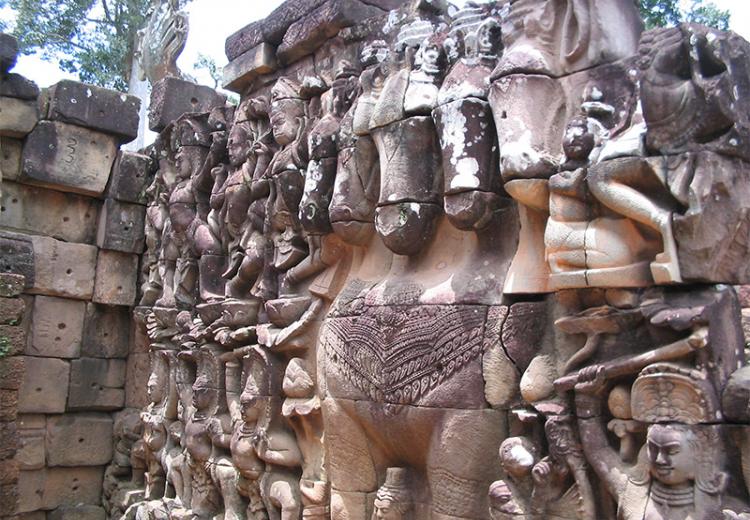Angkor What? Angkor Wat!

The “Terrace of Elephants” at Angkor Wat, Cambodia.
Beginning in the 9th century the Khmer empire, which was based in what is today northwestern Cambodia, began to gather power and territory in mainland Southeast Asia. It would grow to be one of the largest empires in Southeast Asian history, and at the height of its power the empire’s influence reached beyond the current boundaries of Cambodia and into present day southern Vietnam, Laos, and Thailand, stretching into the Malay Peninsula. Over the course of several centuries, the Khmer kingdom built nearly one thousand temples, shrines and monuments stretching across a significant portion of mainland Southeast Asia. The largest concentration of structures is located on the northwest tip of the Tonle Sap, or great lake, near the present day provincial capitol of Siem Reap. Among these temples is the largest religious structure in the world: the temple known as Angkor Wat.
In this lesson, students will learn about Angkor Wat and its place in Cambodian, and Southeast Asian, history. Students will attempt to “read” the temple, in a way which resembles the reading of a primary document, to gain insight into this history. In addition, this lesson can also supplement world history lessons which focus on the migration of ideas and religions, such as the movement of both Hinduism and Buddhism to Southeast Asia.
Guiding Questions
What is the significance of Angkor Wat, and what does the size and complexity of the temple say about the Khmer Empire?
Is its use today the same as it was when it was first built, and what does the answer tell us about Cambodia’s history?
Learning Objectives
Identify where Angkor Wat is located on a map of Cambodia.
Relate a basic history of the temple, including when it was built, by what civilization, and for what purpose.
Discuss what the temple’s size and complexity tells us about the history of the Khmer Empire.
Discuss the change in the use of the temple from a Hindu temple to a sacred pilgrimage site for Buddhists, and the purpose the temple fulfills in Cambodian society today.
